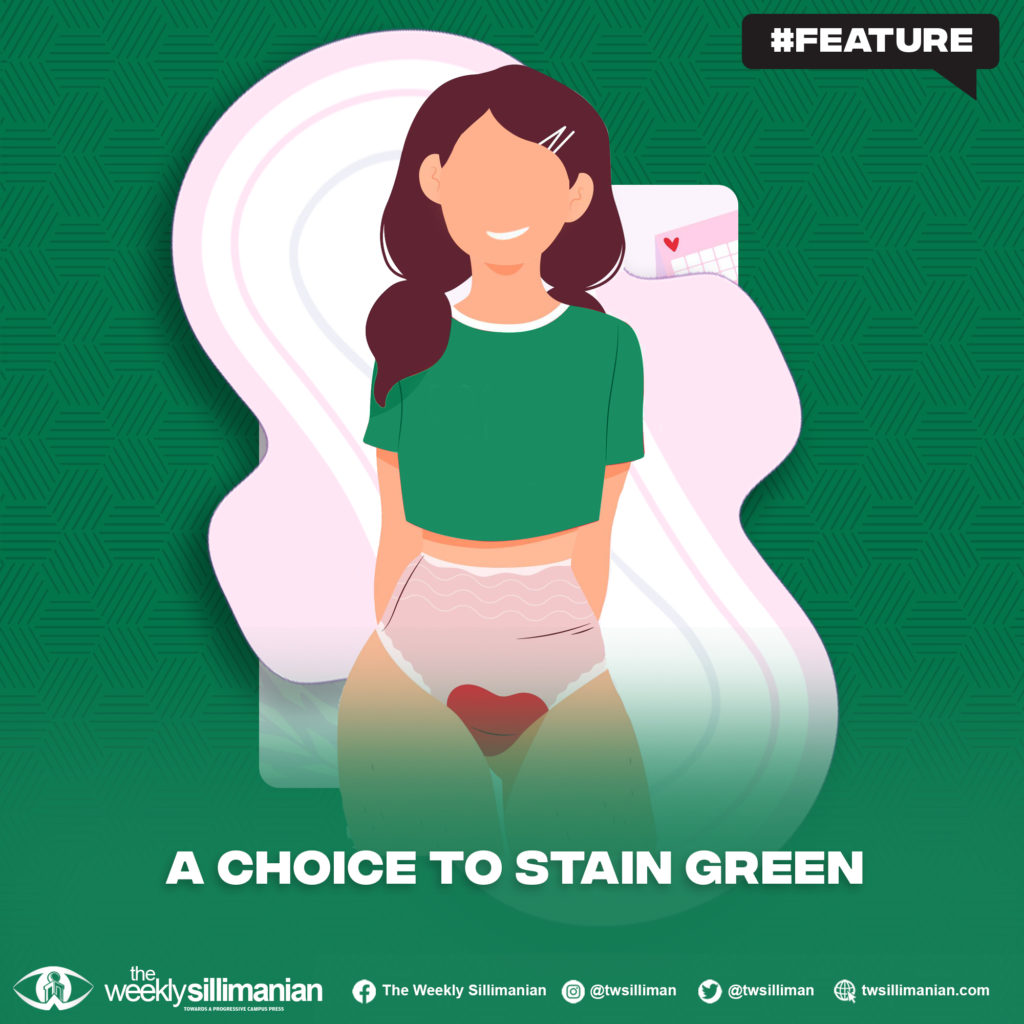by Zarelle Glen Dorothy A. Villanzana | November 12, 2021
For most, periods typically last three to five days, and every three to four hours, one’s pad needs to be changed, as it is unhealthy to keep the released toxins close to your intimate area for too long. That would mean six to eight pads used in a day, and 18 to 24 disposed of within three days. It should also be noted that it takes 500 to 800 years for a single pad to decompose. Multiplying that number of years to the number of sanitary napkins used, we begin to ponder the possibility of these disposable products outliving the planet itself.
Despite these realities we ought to ponder, one thing is clear: menstruation is costly, both to wallets and the environment and even perhaps, to one’s health.

The Problem with Disposable Pads
Disposable pads, colloquially known as “sanitary napkins” or simply “napkins”, are made of synthetic plastics consisting of volatile organic compounds and phthalates (chemicals that make plastics more durable). Trash cans are filled with piles of these plastic materials every day, and it is problematic when you consider how long they take to decompose. An additional factor to worry about is the odor they give off, which signifies the presence of bacteria, and because these products are often flushed down the toilet, they end up in our sewage system thus polluting our oceans and other bodies of water.
An investigation from various South Korean media outlets in 2017 also found that new pads from a brand called Lillian might be causing menstrual problems and irregularities, as it received many complaints from those who had used these pads. It was also mentioned that long exposures to these pads could lead to the absorption of chemicals through the genitals.
Through the years, many health issues have also arisen concerning menstrual pads. While these pads have helped us stay a lot more comfortable during our “red days” for several years now, it would be best to start weighing on its drawbacks as much as we have enjoyed its benefits.
We have already taken the initiative to replace plastic bags and straws with those made of paper and metal respectively. Surely we can do the same for the use of pads, through switching from single-use sanitary napkins to more eco-friendly products like cloth pads and menstrual cups.
The Alternatives
Cloth Pads
Mostly made of cotton, cloth menstruation pads are a good substitute for conventional pads since they tend to stay fresh longer. Their breathable fabric allows moisture to evaporate, meaning fewer bacteria will thrive, thus eliminating unwanted odors. Additionally, since they do not contain harmful chemicals such as fragrances or plastic materials, they are much safer to use.
Cloth pads are also more affordable since they could be washed and reused. Compared to buying a new pack of disposable pads every month, you could buy cloth pads once which you can still use for the next four years. But even if they are reusable, it is advised to keep your hygienic goods in check by changing them regularly – up to six times a day depending on how heavy or light your menstrual flow is.
Menstrual Cup
Although it seems like a new product, menstrual cups have actually been around since the 1930s. This small contraption has been stirring curiosity for many, and fear for some since it was first invented.
A menstrual cup looks just like a bell but works like a cup. Made of silicone or latex rubber, it is flexible and easy to insert just like a tampon. But unlike a tampon or a pad, it catches and collects the waste instead of absorbing it. This is safer as it preserves the healthy bacteria that prevent vaginal infections. Menstrual cups are also much more convenient as you would only have to empty the contents of the cup after twelve hours at most.
Using menstrual cups may seem scary at first, but based on several reviews, they feel safer and much more comfortable than tampons or napkins. Although they can be expensive, they actually save more money in the long run, considering their reusability. Since menstrual cups could last up to ten years, each use of these cups could save a person at least 2,160 disposable napkins.
Truly, menstruating is exhausting and costly. One person accumulates too much waste for a product that decomposes only after we have long passed. One might argue that they did not ask for a uterus to bleed monthly. But as it is a natural process, we ought to live by it and consider being sustainable with our choice. After all, these alternatives not only help save the planet but also you and your wallet.
Not everyone might have the access to these reusable products. But if you do, know that your own decision to switch to eco-friendly products now would already save a great number of disposable pads from the landfill. It takes a lot to truly create a big impact, but with consistent and conjoined efforts, we can preserve the planet for future generations, while educating young ones about their reproductive health.


